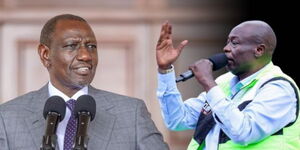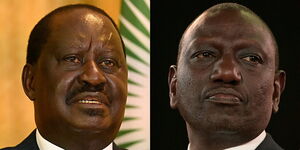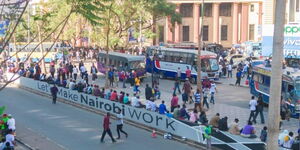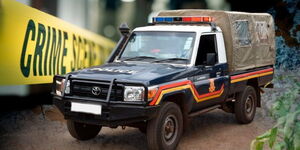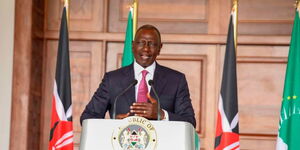19 years after it was first enacted, the shoes-off policy is set to be dropped by major international airports, especially in the United States.
In December 2001, Richard Reid, a British man who would come to be known as the "shoe bomber," attempted to blow up an American Airlines flight from Paris to Miami with explosives hidden in his shoes.
He failed to detonate the explosives, and the plane landed safely in Boston after passengers helped subdue him.
Reid’s plan was disrupted when he struggled to light a fuse attached to his shoes, which contained roughly 10 ounces of explosive material, according to the Federal Bureau of Investigation (FBI).
Reid pleaded guilty to terrorism charges and is serving a life sentence at a Supermax prison in Colorado.
After the bombing attempt, the Transportation Security Administration (TSA), an agency of the United States Department of Homeland Security (DHS), enacted a rule in 2006 directing passengers to remove their shoes when going through security at all airports in the United States.
This rule would then be adapted at other airports across the world, including Kenya's main airport, Jomo Kenyatta International Airport (JKIA).
TSA’s Rule Change
However, close to two decades after the rule was enforced, the TSA is believed to be initiating changes, according to reports from the US. The reports indicated that passengers in some airports across the US no longer have to remove their shoes during regular preflight security checks.
According to sources who spoke to American media outlets, the changes appear to be done in a phased approach, and the first airports where the no-shoes requirement is expiring include Baltimore/Washington International Airport, Fort Lauderdale International Airport, Cincinnati/Northern Kentucky International Airport, Portland International Airport, Philadelphia International Airport, and Piedmont Triad International Airport in North Carolina.
Other airports where passengers reported they did not have to take off their shoes are the Los Angeles International Airport and New York City's LaGuardia Airport.
While the TSA is yet to formally announce the move, it revealed in a press release on Monday, July 7, that it is "exploring new and innovative ways to enhance the passenger experience and our strong security posture."
Even so, the change is believed to be made possible by the deployment of new, advanced scanning technology (like millimeter wave scanners) that can effectively detect threats within footwear without requiring removal. Despite this, passengers who trigger an alarm at the scanners or magnetometers will still be required to remove their shoes for additional screening.
TSA & JKIA
In desiring to change the rules on shoe removal, the TSA, by being a leading authority in aviation security (due to the sheer volume of US air traffic and its past security incidents), often sets de facto standards that other countries and airports tend to follow or consider. This could result in a change in the rules in Kenya.
While influential, a change in TSA policy does not automatically mean that JKIA or other international airports will immediately drop their shoes-off rule. Each country's aviation security authority (e.g., the Kenya Civil Aviation Authority—KCAA, working with the Kenya Airports Authority—KAA at JKIA) makes its own policy decisions.
For such changes to be seen in Kenya, JKIA would need to significantly invest in its technological capacity. The primary reason TSA is lifting the policy is due to advanced scanning technology. As such, JKIA would need to invest in and deploy comparable cutting-edge scanners at its security checkpoints if passengers are to enjoy a ‘shoes-on’ experience.
Also, risk assessment plays a key role. Kenya's aviation security authorities conduct their risk assessments based on local, regional, and international threat landscapes. After conducting the assessments, a decision of such impact could then be made.
Another factor is alignment with international best practices. Global bodies like the International Civil Aviation Organisation (ICAO) provide guidelines, but individual states implement them. JKIA would likely observe how other major international hubs (especially in Europe and Asia, some of which already have more targeted shoe screening) react and adopt new technologies.
Airports that have direct flights to the US (like JKIA) are often subject to additional security requirements mandated by the US Department of Homeland Security or the TSA itself. Even if the TSA changes its domestic policy, it might still have specific requirements for foreign airports serving US-bound flights. This could then determine whether or not Kenya adopts a ‘shoes-on’ policy.
Another critical factor is passenger experience vis-à-vis security perception. A balance would need to be struck before any rule changes are considered. While passengers would welcome the convenience, security authorities need to be confident that the change does not create new vulnerabilities or reduce the public's perception of security.
The decision to drop the ‘shoes-off’ policy will ultimately rest with Kenya's aviation security regulators, based on their assessment of technology readiness, threat levels, and compliance with any specific international obligations. It is likely that if the technology proves effective and widely adopted, JKIA will eventually follow suit to align with global best practices and improve passenger flow.
In the past, the William Ruto-led government has pledged to improve JKIA’s infrastructure, especially after complaints of leaking roofs and unusual blackouts.

KNEC Confirms Dates for 2025 KCSE Release News Just In


